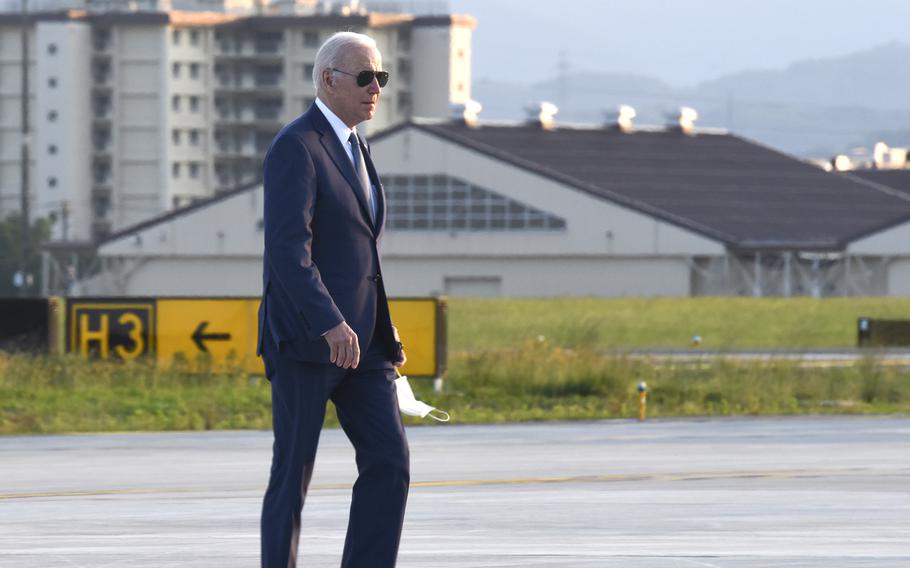
President Joe Biden walks toward Air Force One as he departs Yokota Air Base, Japan, on May 24, 2022. Biden will travel to the Middle East in July. (Kelly Agee/Stars and Stripes)
A slew of bullish headlines has oil extending its gains into a second day, with U.S. inflation showing signs of cooling and a further easing of China’s Covid-19 restrictions.
West Texas Intermediate rose as much as 4.2% to trade above $76 a barrel on Tuesday. U.S. consumer price figures posted a smaller-than-expected gain, sending the dollar lower and US equities higher. Traders are growing more optimistic that the Federal Reserve will ease the pace of interest rate hikes.
The CPI data followed further indications that China is set to ease its zero-Covid policy. China’s ambassador to the U.S. said the country will continue relaxing its pandemic curbs and will welcome more international travelers soon, lifting demand prospects in the world’s top oil importer.
“Amazing CPI continues to create this kind of volatility, but most certainly good for risk sentiment,” said Ole Hansen, head of commodities strategy at Saxo Bank. Unless prices break key levels, including $75 for WTI, “this will still be seen as a bounce within a downtrend,” he said.
Crude is on track for its first back-to-back quarterly decline since mid-2019 on concerns about the global economic outlook, with thin liquidity in the oil market exacerbating price swings. The bearish market mood has permeated so much that Goldman Sachs, a bank well-known for its bullish forecasts on crude, slashed its Brent averages for the first and second quarter of 2023 to $90 and $95/ a barrel, respectively, from $110.
WTI for January delivery advanced $$2.86 to $76.03 to 12:06 p.m. in New York. Prices rose 3% on Monday. Brent for February settlement gained $3.03 to $81.02 a barrel.
TC Energy Corp. has yet to submit a restart plan needed to resume operation of the Keystone pipeline following an oil spill. The conduit has now leaked more crude than any other pipeline on U.S. land in the past 12 years.